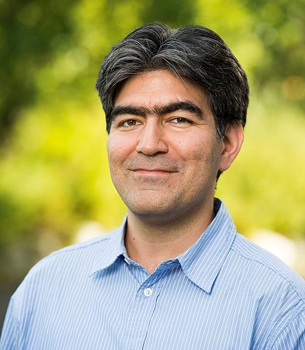Professor's portrait: Masoud Daneshtalab

Masoud Daneshtalab is one of the professors to be installed at the Academic Ceremony on 7 October 2022.
Masoud Daneshtalab, Professor, School of Innovation, Design and Engineering, Division of Intelligent Future Technologies
Can you briefly describe your academic career – what choices have brought you to where you are today?
I completed my Bachelor's degree in computer hardware engineering at the Shahid Bahonar University of Kerman, and my Master's degree in computer architecture from the University of Tehran, Iran, in 1997 and 2006, respectively. I started my Ph.D. study at the University of Turku, Finland, in 2008 and carried out my research in the real of network-on-chip, where I designed and optimized network infrastructure for communication among multiple components and elements (e.g., processors and memories) inside a chip. I earned my Ph.D. in 2011 and started looking for a potential research direction for my research career. In 2014, I won the prestigious Marie Skłodowska-Curie fellowship to join the Royal Institute of Technology (KTH) in Sweden to investigate the integration of neuromorphic applications onto the network-on-chip.
In 2016, I joined MDU as a senior lecturer and was prompted to become a full professor in late 2020. I established the heterogeneous systems research group (HERO) in 2018, which currently has more than 13 Ph.D. students. My current research focuses on the intersection of artificial intelligence and computer hardware design. Most of the research activities are based on industrial projects, but some projects are funded by VR and SSF where we dig into more theoretical aspects.
What area do you research in?
Artificial intelligence (AI), specifically Machine Learning (ML) and Deep Learning (DL), have already been adopted widely in industry and in our daily life. ML/DL's impressive results have been achieved by increasing the computational intensity of ML/DL models leading to explosive training costs doubling every few months. Handling such a large amount of computational requirements poses several challenges for scalable design, energy efficiency, and various deployment scenarios from edge to cloud. My current research focuses on the intersection of ML/DL algorithms and computer hardware design for addressing the above challenges.
How would you describe your research environment at MDU?
The research environment at MDU, particularly at IDT, promotes collaboration and teamwork among the researchers at MDU and industrial partners in a very constructive manner.
What drives you in your research?
Apart from producing high-quality research (publication in flagship conferences and journals) and leap to a higher H-index, showing the impact of the research on industrial applications has been driving me so far.
Which research areas are closest to your heart?
The intersection of artificial intelligence (AI) and computer hardware design (electronic).
How do you see becoming a professor right now at the MDU stage as a new university?
This transformation will scale up the University, which will impose new opportunities and perhaps some societal and government expectations. Since Professors are envisioning and drawing future research trends for the University, the impact of professors at this stage that MDU is scaling up is significantly high.
What is the best thing about researching MDU?
IDT and, in general, MDU have created a constructive, collaborative environment that has driven researchers to contribute meaningfully and are made to feel like valued members of the organization.
